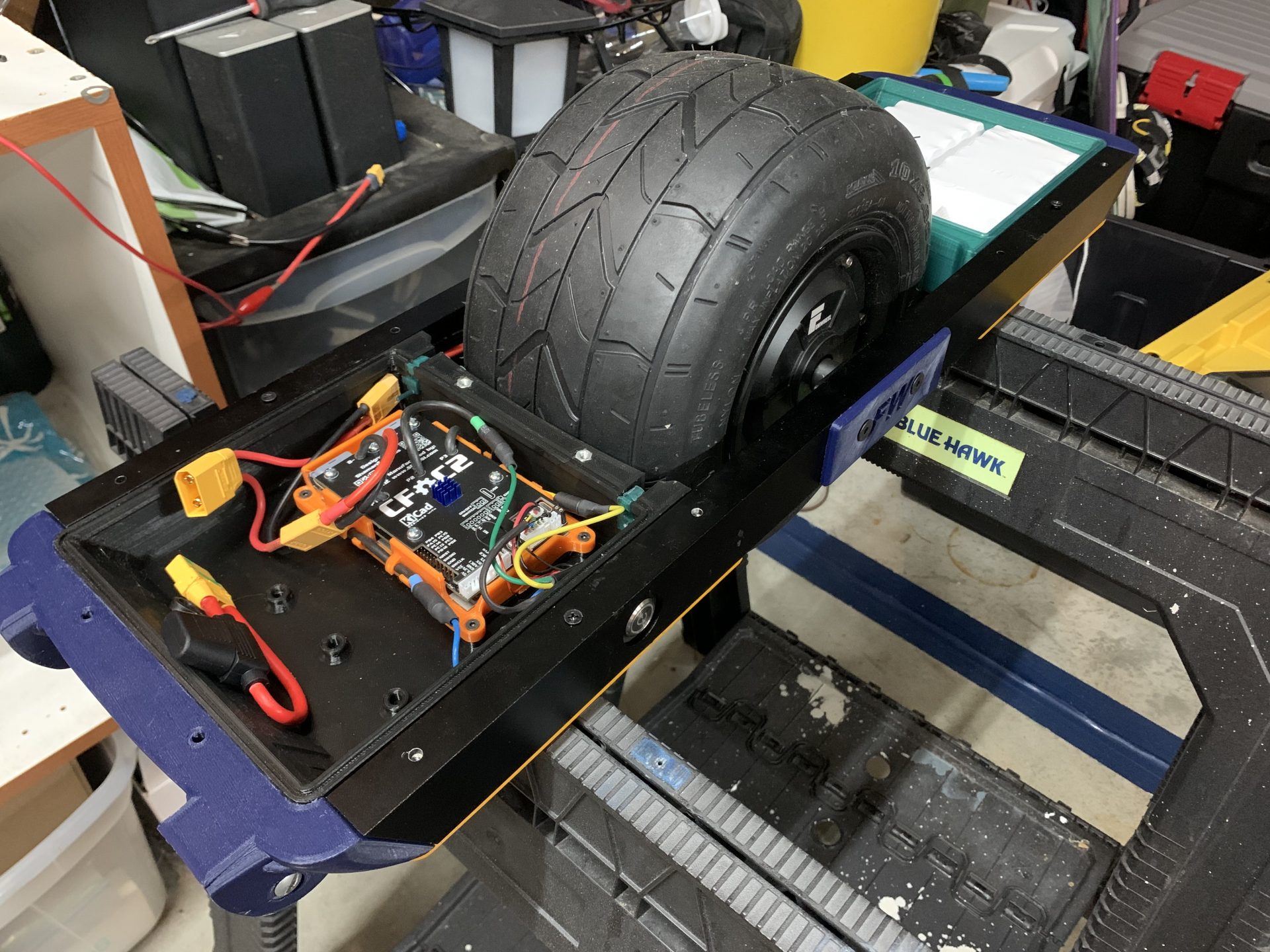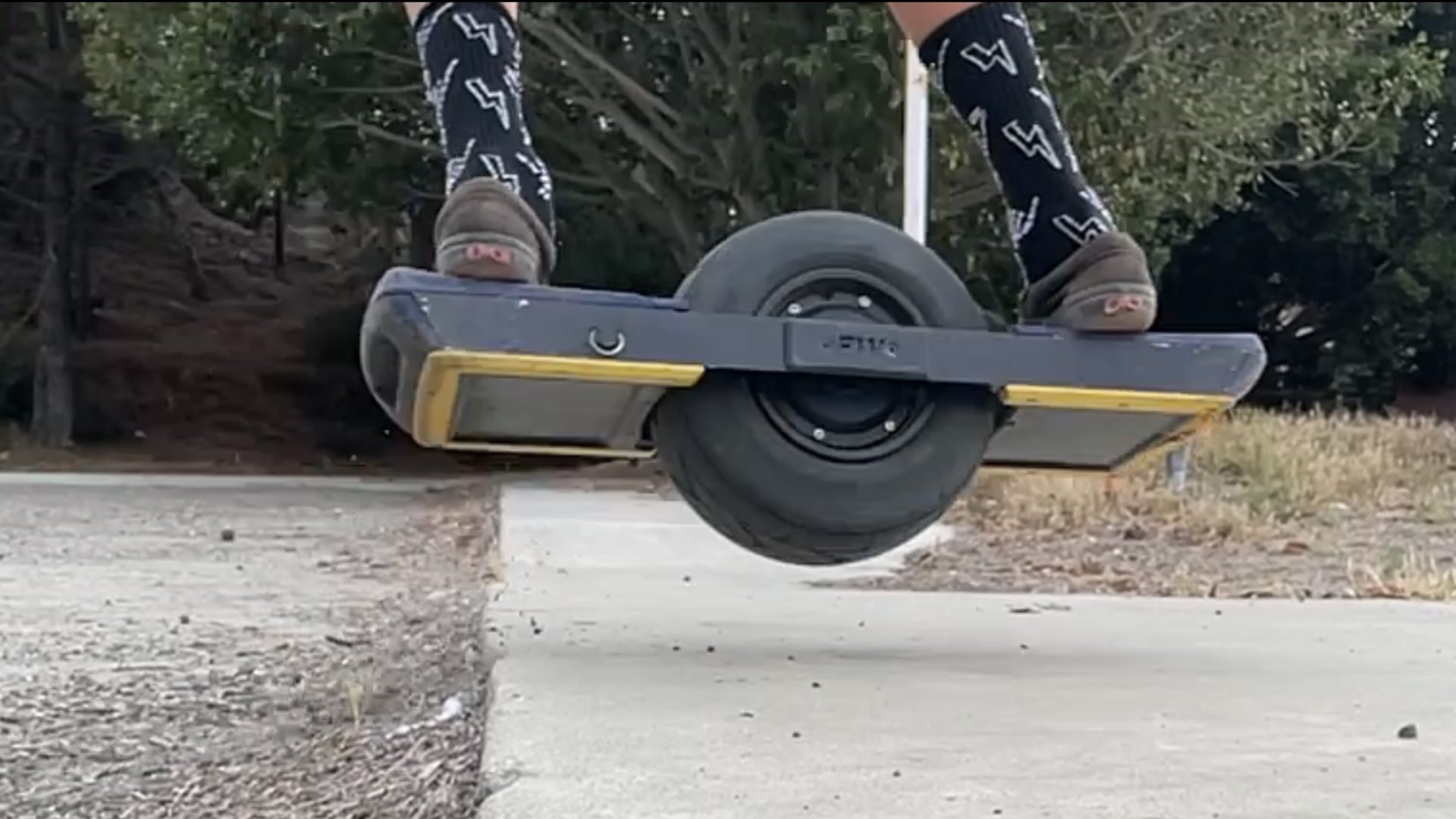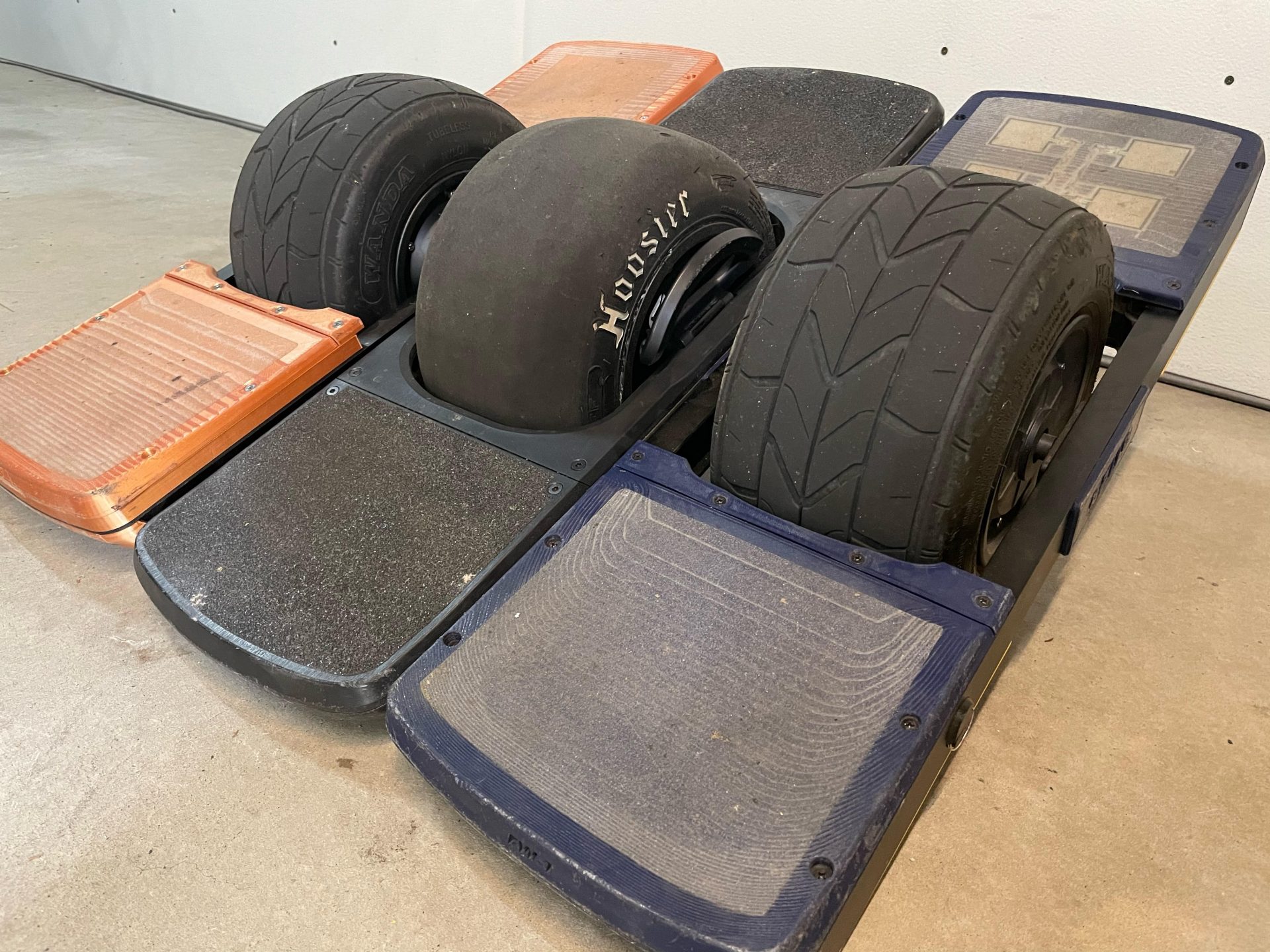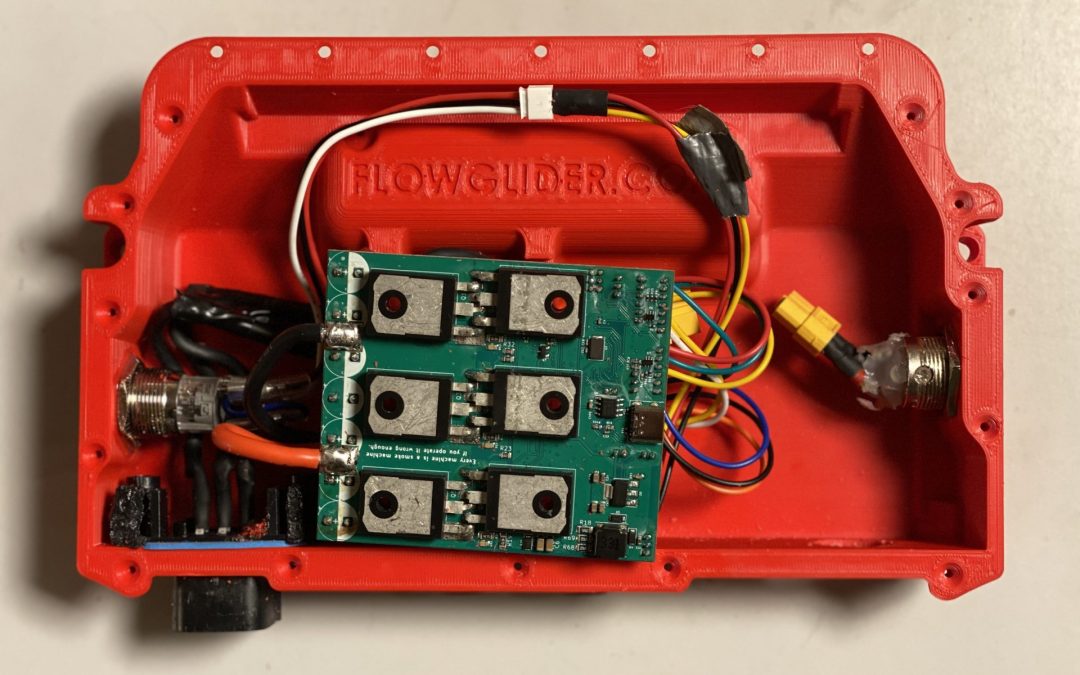VESC is an electronic speed controller popular in DIY e-skate. It uses open-source software that enables DIY board builders to fine-tune dozens of performance parameters to create their perfect ride—and it’s dropping into the onewheel world like Dom Williams off a six-foot wall.
While some tech-heads and early adopters have been riding VESC boards for years, the acronym has slipped into the average Onewheel rider’s vernacular this season, with big names in the community singing its praises.
Nico Aleman took third place in his local Underground Circuit finals on a VESC board, Hannes Schatzmann took first at Europe’s Floatline Fest, Chris Richardson uses VESC to achieve crazy new tricks like the Richflip, and even The Float Life’s own Jeff McCosker recently posted in Onewheel Riders Group, “This new VESC firmware kinda slaps.”
The IOWA talked to some big players in the VESC space to understand how this open-source technology has been adapted for one-wheeled boards and what it could mean for the future of our digital boardsport.
What is VESC?
VESC stands for Vedder Electronic Speed Controller and is named for Benjamin Vedder, the Swedish engineer who first adapted ESC technology for electric skateboards around 2014.
However, the original software did not include code for one of the key functions behind a single-wheeled skateboard: Self balancing. That was added in 2019 by Mitch Lustig, who integrated code for a balance algorithm that reacts to changes in the angle of the board.
Today, VESC builders are riders who want to innovate and improve their one-wheeled ride by upgrading key components such as the battery and motor. This is no longer possible on Future Motion (FM) boards due to digital handshakes implemented in newer models (read: the battery is married to the controller and can’t be replaced, even with an equivalent stock battery, except by FM itself).
VESC allows tech-minded riders to use higher-voltage batteries and replace or customize other major components that cannot be modified on stock FM boards, although many builds still use basic framework and components from FM boards (rails, motor, etc.).

What the FOC is Little FOCer?
Field-oriented control (FOC) is one method of controlling a brushless motor. The cheap FOCer was one of the first open-source VESC-compatible controllers for one-wheeled boards.
The designer is a former Texas Instruments engineer who goes by Shaman. He created the original cheap FOCer to be open source and buildable for cheap: With just $40 or $50 in parts and a PCB, you could follow Shaman’s recipe to build a controller of your own.
Cheap FOCer eventually evolved into Little FOCer, a plug-and-play VESC-compatible controller that conveniently fits in the FM controller box. Little FOCer is made by Shaman Systems and sold by Makers PEV in the U.S. and Customwheel.shop in Europe. It retails for $300—a bit more than the Cheap FOCer, but still a good deal less than the FM controller module… and you can repair or modify it at your leisure.
VESC Vs. Future Motion Onewheel
Of course, the software and firmware contained in the controller module add substantial value above and beyond the cost of parts. That’s the secret sauce that will make FM’s Onewheel so difficult, if not impossible, to replicate.
“The software that Future Motion has come up with is genius,” said Ryan Walker, better known as Onewheel Soul Rider, the creator of the Onewheel Underground. “A lot of people don’t realize how advanced it is until you start digging into it. With VESC, though, you don’t have to wait two years for the manufacturer to offer a firmware update. Is there room for improvement? Absolutely, but you can get that next week.”
Case in point? A firmware update released just last week may have been the answer riders were looking for with regard to the VESC board’s biggest issue: nose dip on bumpy terrain. This update was able to be pushed out to VESC riders everywhere as soon as it was created.
Who Invented VESC for Onewheel?
No individual person invented VESC or single-handedly adapted it for use in a one-wheeled device. Players like Vedder, Lustig, and Shaman laid important groundwork, becoming the proverbial shoulders of giants that future VESC innovators would stand upon.
Even before that, Alex Blyzniuchenko was running an open-source onewheel using a drone flight controller connected to a VESC.
In the years since, players like Fungineers and Floatwheel have helped VESC achieve scale. Funwheel was one of the first to produce VESC-compatible controllers in small batches. Floatwheel sold the first set of DIY rails compatible with the motor most early builders were sourcing from Aliexpress, eventually expanding their offering to a full DIY onewheel (or rather, Floatwheel) kit.
In short, it took a village to create the VESC board everyone is talking about today. Below are just a few of the names and stories involved.

2020
Dado Mista first saw a Onewheel on the beach near his home in San Diego around 2018, but the price scared him off from buying one of his own. Then, during the pandemic lockdown, his son Nick (then 11) found a Fungineers video about building lithium-ion batteries and a DIY Onewheel, and at that point decided to try building one themselves.
Fungineers had, in fact, been working on components for a one-wheeled VESC board, and many of the parts this father-son team thought they’d have to build from scratch were already available in the Funwheel kit—but that didn’t mean the project was easy, or that the build was anything impressive when it was done.
“The Cheap FOCer can only handle low amps by today’s standards,” Mista explained. “It was great for low-key rides and for a kid, but a lot of people burned out their MOSFETs when they tried it.”
Mista and his son purchased CNC aluminum rails, a re-branded motor, and hundreds of little metal parts that came cheap but slow from China, or quick but pricey from the U.S. They also bought and learned to use their first 3D printer, as the rails came with design files for fitted components including the controller box and bumpers. Surprisingly, the footpad sensor was one of the easiest problems to solve, relative to everything else.
“I don’t have a DIY background,” Mista admitted. “I’m an electrical engineer, but on the software and hardware development side—I never learned to solder. My son and I learned to do that for this project using YouTube videos. There were a lot of opportunities to mess things up. At many points, I thought I’d ruined it and the whole thing was a waste of money that would never go anywhere. Building a VESC-based project is not for the faint of heart.”
Still, the Funwheel was created without using any FM parts, and that makes it an important milestone in the history of one-wheeled VESC boards.

2021
Hannes Schatzmann got his first VESC onewheel in November 2021. As a European rider, it was extremely difficult for him to get his Future Motion boards serviced. Shipping Onewheels back to the U.S. for repairs would quickly become more expensive than just buying a brand new board, and he was unable to purchase the parts he needed from FM. After the local shop had repaired two or three controllers for Schatzmann, they invited him to try VESC.
They needed test riders. Schatzmann needed a build that was easy and inexpensive to repair. So they hooked him up with a used Little FOCer, and Schatzmann soon found himself making tweaks and improvements that eventually helped push Lustig and Mista’s shaping software into its current (and ever-evolving) iteration.
“In the beginning,” Schatzmann recalls, “it rode like a Trotter—or worse! It had a very stiff shape with very flat forward and backward motion. You couldn’t tail drag to brake, couldn’t butter, slide, or do a varial… I couldn’t even ride to the top of my small Graw ramp because, when I lifted the nose to go up, it thought I wanted to brake. Then I started riding and identifying what I did or didn’t like. I didn’t even understand what the different dials meant or did. I just tweaked the settings until it worked.”
Of course, once he got all that dialed in, it was trail season and he had to start all over again. Nose dipping and bumpy terrain presented new challenges, just as Schatzmann’s tricks and parking garages had presented new challenges compared to previous shapings that were optimized on the flat terrain of the Netherlands.
2022
Soul Rider was the first rider to complete a race (DirtSurferz) on a VESC board.
“It did well,” he said, “but it wasn’t quite there yet.”
He said the board struggled with nose dip in rough sections, where the rattling confused components like the accelerometer and gyroscope. He said this issue has improved drastically throughout the season and the board rides much faster now, enabling him to crush previous personal records across the Underground Circuit. A new firmware update from Lustig in October appears to have solved the nose dip problem once and for all.
Even if he didn’t have the fastest board at DirtSurferz, Soul Rider said it was a luxury to come back to “the pit” between segments and tune factors like braking power, nose height, sensor delay, adaptive torque response, uphill sensing and more. He compared this feature selection process to choosing a snowboard.
“A sharp edge on a snowboard will carve fast but it catches easily,” said Soul Rider. “There’s a yin and yang to everything. In onewheel, you just get what they give you, one size fits all. VESC rides the way you want. There’s no one board for everyone and every situation. A freestyle setting won’t be good on trails, but with VESC you can change it easily. The idea that one board fits all will never work in a truly advanced board sport.”
Is VESC the Future of Onewheel?
While the hardware is comparable or even superior to FM’s and the software has vastly improved, VESC has a long way to go before (or if) it ever goes mainstream in the onewheel ecosystem. According to Schatzmann, however, it’s starting to mature into a form that could attract more than just engineer types.
“A lot of people out there are scared to enter VESC because in the app, you only see numbers,” Schatzmann said. “You can learn it. The VESC community is there and wants to help. They’ll get you through it.”
Schatzmann offers several tutorials on his YouTube channel that can help new VESC riders navigate the nearly 100 settings and dials found in the Float Control app. Mista’s “magic settings” video is also highly educational.
Some feel that the additional speed and power enabled by VESC could give trail managers pause when considering whether to allow one-wheeled boards on their property. Soul Rider argues the opposite, saying VESC could be a compelling way to add legitimacy to the sport—from the trails and lifts of your local MTB park all the way to the X Games.
“If we want onewheel to be an extreme sport,” said Soul Rider, “we need two things: More power in the boards, and access to more awesome terrain. VESC takes the handcuffs off the board so we can do whatever we want with it. The more advanced our boards and riding get, the more respect we can gain from the MTB and board sports community. Hopefully this will give us more access to terrain currently reserved for MTB, like lift access mountain bike parks.”

What Does VESC Mean for Onewheel Racing?
While VESC boards will certainly never be permitted at Onewheel Racing League (ORL) competitions, they could potentially affect rider rankings and Race for the Rail invites depending on how organizers of smaller and sanctioned events choose to handle the new technology.
But there is one type of racing where VESC conversions will always be welcome, even encouraged. According to Soul Rider, VESC and Underground racing go hand-in-hand because the software allows unlimited modifications and levels the playing field for heavier riders by enabling higher-voltage boards.
“The Underground is going to be the F1 racing of onewheel,” Soul Rider said. “Bring what you want, race what you want. 84 volts. 107 volts. Whatever. Build it, come, race, and be the fastest one out there.”
Of course, VESC will also introduce yet another variable into community racing and ranking—a conversation that is already in full swing. It’s going to be a complex discussion, and some kind of consensus will need to be reached in advance of mainstream 2023 racing events.
VESC proponents say future races should be broken down, not by age, weight, or gender, but by board voltage. However, all of these factors play some role in both performance and participation. It seems very unlikely that traditional classes such as Women or Clydesdale would be retired in favor of purely voltage-based classes.
It will be interesting to see what the different leagues adopt and how community event organizers respond. IOWA is standing by to help facilitate the discussion in any way we can.


Appreciate the collection of info… and will join the VESC movement soon. Onewheel is the focus of much of my energy and time… and money. VESC will be the next purchase!
This information is fascinating and gives a full picture perspective. I have a far deeper understanding of vesc boards and am very intrigued. Thank you so much.